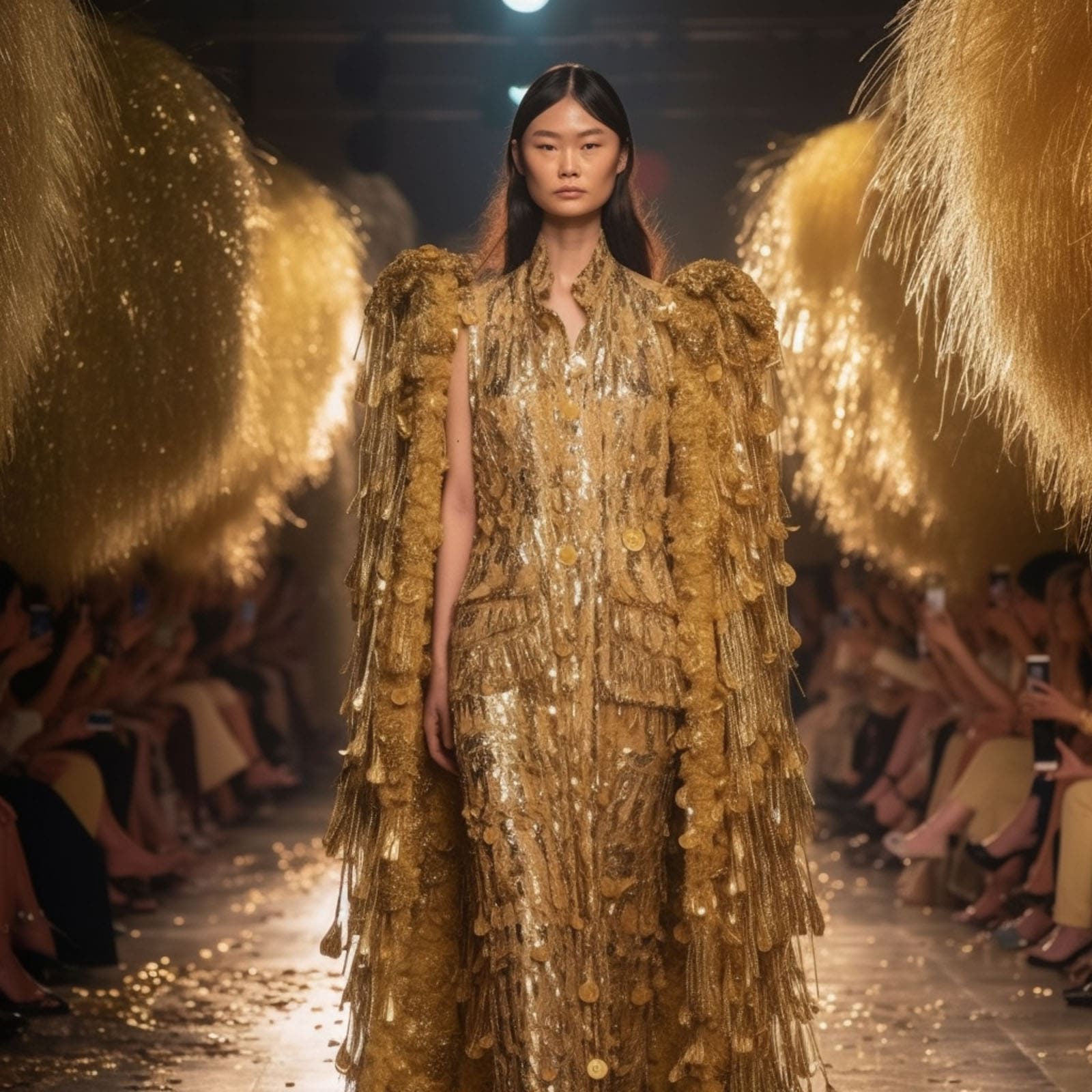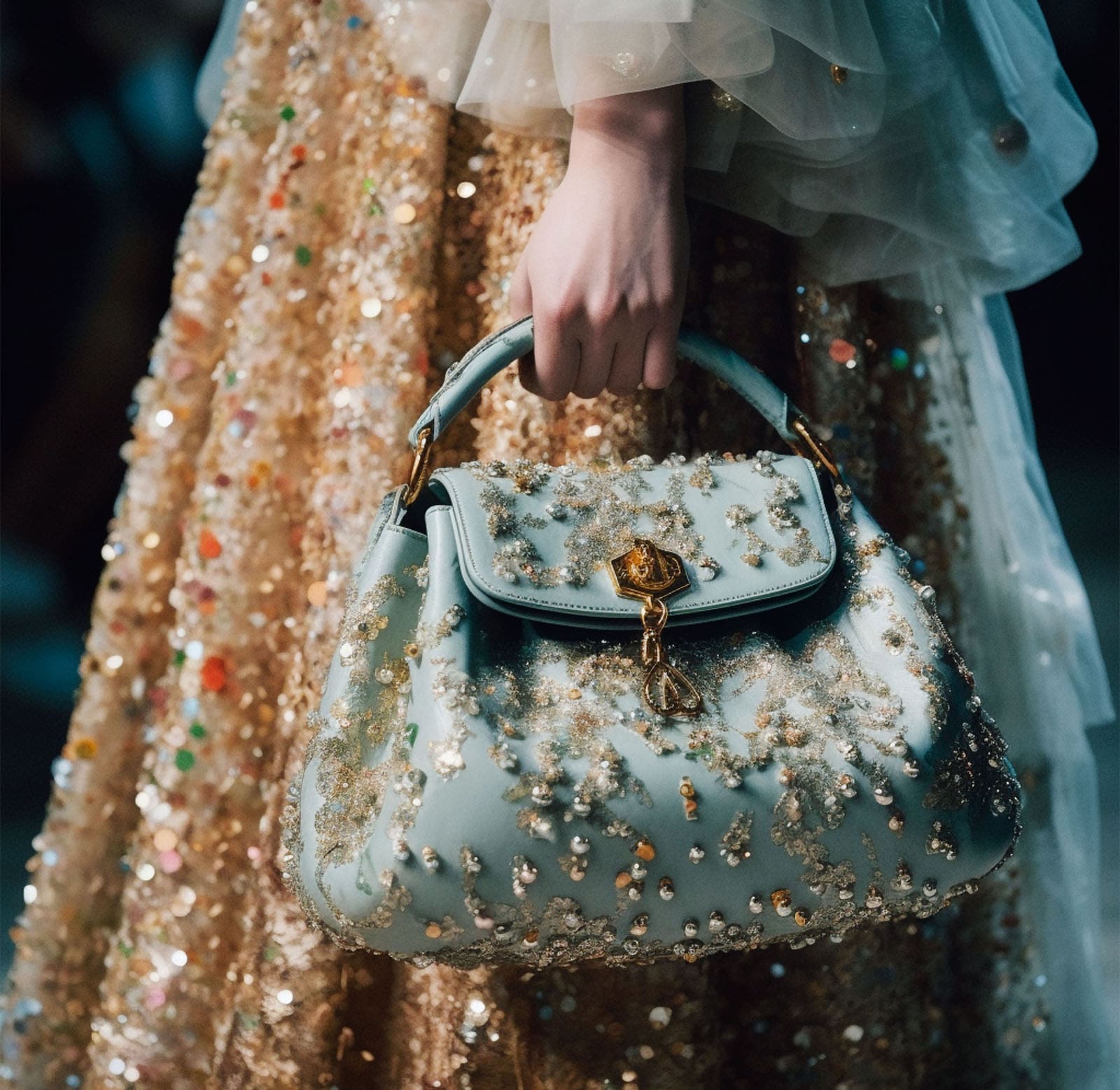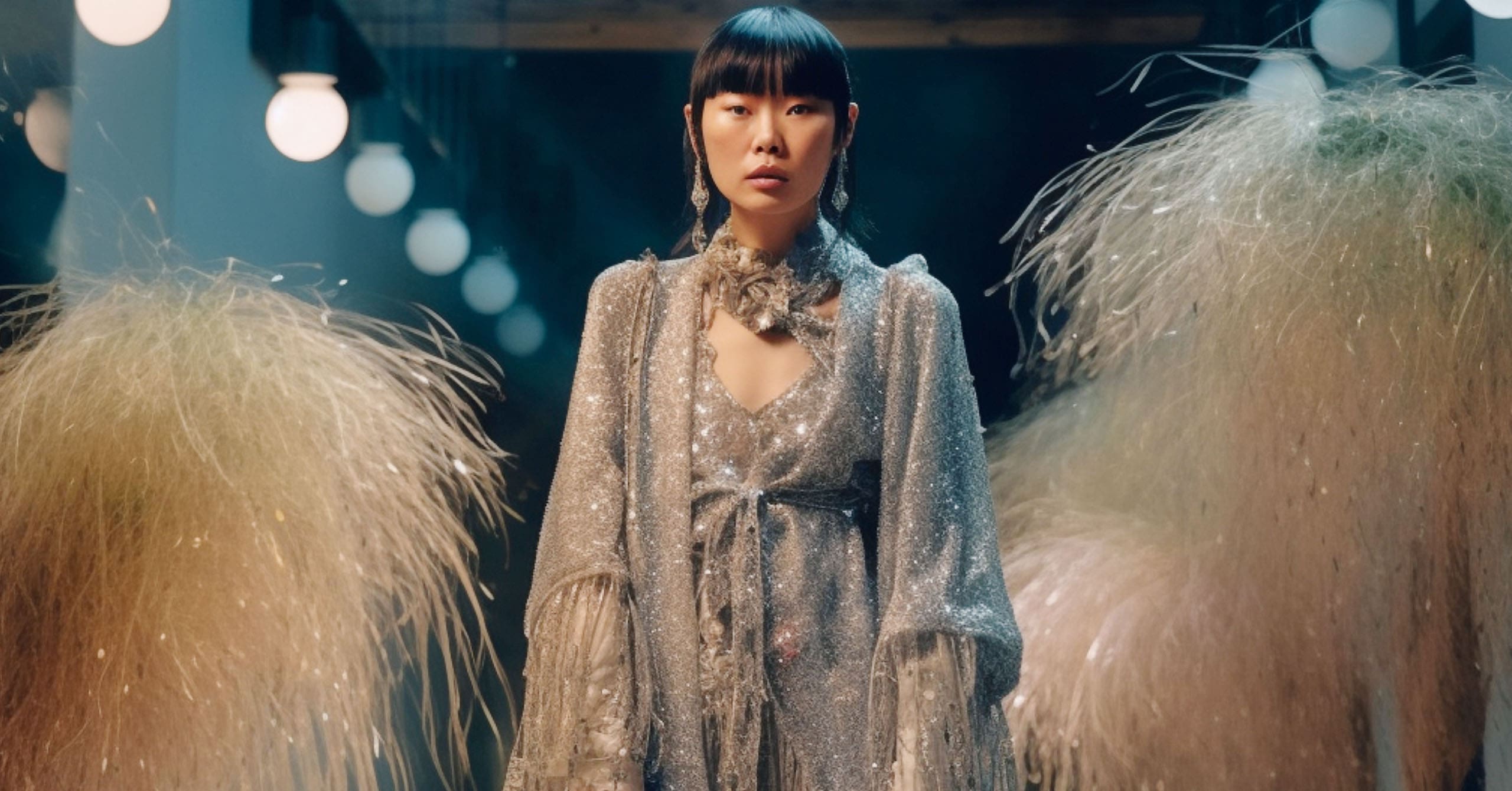For the inaugural AI Fashion Week in New York, Marta Contreras Simó created “Glitter,” a collection inspired by shapes, textures, and movement.
For the inaugural AI Fashion Week in New York, Marta Contreras Simó created “Glitter,” a collection inspired by shapes, textures, and movement.
Creativity thrives in both limitations and the explorations of the unknown. Now, Web3 is pushing the boundaries and sparking a new wave of creativity in fashion.
Fashion’s magic is traditionally spun out of threads and textiles. Now, technology creates new ways of fashion storytelling (and selling), thanks to the buzzwords of the moment: Web3 and the Metaverse.
But buzzwords they may be, several brands have already jumped on the investment wagon and explored the digital space in both creative and commercial ways. Gucci has successfully released Web3 products in the virtual Roblox universe, while Nike has engaged creators through a collaborative Air Force 1 design contest in their .SWOOSH Web3 community.
And it is not only limited to contemporary brands, as digital Web3 engagements are more so curiouser to centuries-old heritage names seeking relevance to a younger generation. Tiffany & Co, for instance, launched its first collection linking NFTs (Non-Fungible Tokens) and fine jewelry that sold out in 20 minutes.

Creative innovation and challenging norms have always been the moving force of fashion, so it’s no surprise that the industry is taking a step into this space, whether through virtual showrooms or cosmetic try-ons.
The buzzwords now, the norms of tomorrow. Well, that’s what the world of fashion is betting on.
But, what is it anyway? In this highly digital world, it’s easy to screenshot, download, or copy digital items. Web3 is a version of the internet where we can own digital products. Digital products such as NFTs or skins have cryptocurrency value and ownership certificates that are built on the blockchain, a digital record book that cannot be altered. And if you’re going to own something digitally, there has to be a universe where you can wear and show that off.
That’s the Metaverse for you. The concept was coined by science-fiction author Neal Stephenson in 1982 as a fully immersive virtual space, where people use digital avatars of themselves to explore the online world.
Virtual craftsmanship
We buy into fashion to be part of a tribe, to belong to a group. Discussed in a Harvard University paper, fashion is the most immediate visible marker of self-presentation that communicates meanings that have individual and social significance. On top of looking good, the way we post and tag fashion labels on our social media signify our sense of belongingness and our personal values through brands we resonate with. From curating our social media profiles to digital avatars, redefining ourselves online is not entirely new.
This sentiment is seen in the Web3 space, where digital fashion creators like Samuel Jordan started designing accessories on Roblox as a hobby and a way to highly customize his digital self. He has since garnered one million dollars in sales and has caught the attention of brands like Stella McCartney.


Technology has yet to catch up for avatars to be interoperable, which means Web3 items can be used across different virtual worlds. As the world waits, fashion creatives and innovators are constantly experimenting with what can be done in appreciating and creating designs without the limits of yardage of textile or even gravity itself.
Digital designers such as Ivan Medrano, who is trained in both digital art and fashion design, are combining skill sets to explore otherworldly designs that live in the virtual. Haute couture designer Iris Van Herpen looks into the Metaverse as a way of experiencing digital and physical couture simultaneously, especially for her intricate works that push the law of materiality and physics. Just one look at digital platforms DressX and Lablaco, and one will glean how digital fashion involves the work of the hands and hours of creation, mirroring the craft of physical fashion.
Engaging in Web3 isn’t limited to digital avatars and gaming. Through the blockchain, the physical and digital can bring communities together and even change the way we view fashion and retail.

NFTs serve as a proof of ownership and a digital twin for actual physical garments. The application of NFTs to luxury and archival pieces is already apparent. Lablaco’s partnership with Fondazione Sozzani sold physical clothing archives of former Vogue Italia editor-in-chief Franca Sozzani. The listings were phygital (physical and digital), meaning each physical purchase came with the garment’s digital counterpart that you can wear on your avatar in the Metaverse.
Another “phygital” Web3 execution are token-gated experiences. These exclusive experiences are only accessible to owners of brands’ NFTs, and is another way of leveraging engagement and perks to select fashion customers. For example, Nike offered special-edition sneakers exclusive to its NFT holders, while Gucci and Saint Laurent now have token-gated cocktail parties and exclusive websites to launch partnerships, events, and activations.
This is only the start of Web3’s effect in the industry; only time and adoption will tell what else can be done. But looking at the current synergy of technology and fashion, the possibilities of creation, consumption, and community are indeed endless. We have been customizing our digital representations for so long, our digital bodies in the Metaverse just serve as another canvas.

